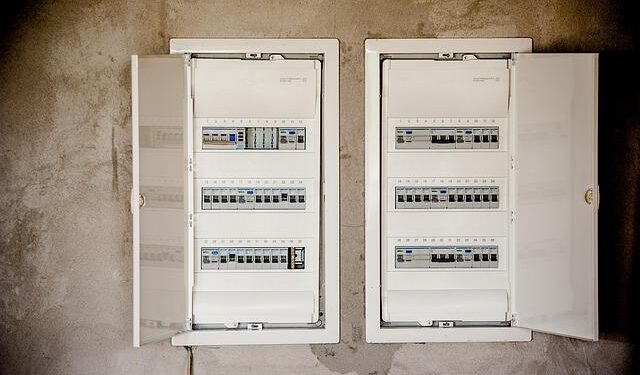In a notable move towards sustainable energy production, Serbia’s state-owned power utility, Elektroprivreda Srbije (EPS), is exploring the integration of hydrogen into its energy generation capacities. As the global energy landscape shifts towards cleaner alternatives, EPS’s consideration of hydrogen reflects a broader commitment to enhancing its production capabilities and reducing carbon emissions. This initiative not onyl positions Serbia to harness one of the most promising energy sources but also aligns with wider European Union efforts to transition towards greener energy solutions. In this article, we will delve into the implications of EPS’s plans, the potential benefits of hydrogen integration in the energy sector, and the challenges that may lie ahead as Serbia navigates this transformative journey.
serbias EPS Explores Hydrogen integration into Energy Production

The increasing global emphasis on sustainable energy solutions has prompted Serbia’s Electric Power Industry (EPS) to consider hydrogen as a potential complement to its existing energy production framework. By integrating hydrogen into their production capacities, EPS aims to enhance its energy portfolio, thereby reducing greenhouse gas emissions and transitioning towards cleaner alternatives. This exploration is guided by recent advancements in hydrogen technology and various pilot projects across Europe that demonstrate the feasibility and benefits of hydrogen use in energy generation.
The integration of hydrogen is expected to yield several potential advantages for EPS, including:
- Enhanced Energy Security: Diversifying energy sources can reduce dependency on fossil fuels and mitigate risks associated with supply disruptions.
- regulatory Compliance: Adopting hydrogen technologies can help EPS meet both national and international environmental standards.
- Job Creation: Developing a hydrogen infrastructure may foster new employment opportunities in research, production, and maintenance sectors.
By investing in hydrogen, EPS not only aims to improve its operational resilience but also to position Serbia as a competitive player in the European energy market. This initiative aligns with broader EU goals for a greener energy landscape, potentially attracting funding and collaboration opportunities on future projects.
The Potential Benefits of Hydrogen for Serbias Energy Sector

As Serbia’s energy sector explores innovative solutions, the incorporation of hydrogen presents numerous advantages that could transform its landscape. First and foremost, hydrogen can serve as a clean alternative to traditional fossil fuels, significantly reducing greenhouse gas emissions. This transition supports Serbia’s commitment to meeting European Union environmental standards. Moreover, hydrogen can enhance energy security by diversifying the energy mix, decreasing reliance on imported fuels, and stabilizing supply during peak demand periods.
Additionally,the potential for economic growth in the hydrogen sector is substantial.It could lead to job creation in manufacturing, research, and infrastructure development. Hydrogen production also opens doors for collaboration with international partners and investors, fostering innovation and technological advancements.The establishment of a hydrogen infrastructure could pave the way for renewable energy integration, allowing for more efficient use of solar and wind power, thus creating a holistic approach to energy management in Serbia.
Evaluating Current Infrastructure for Hydrogen Adoption at EPS

As EPS considers the integration of hydrogen into its energy portfolio, a comprehensive assessment of the current infrastructure is vital to ensure a smooth transition. The company’s existing facilities must be evaluated for their compatibility with hydrogen technologies. This includes analyses of:
- Storage Capabilities: Identifying suitable storage options for hydrogen to ensure safety and efficiency.
- Transport Infrastructure: Assessing pipelines and transport mechanisms to facilitate hydrogen delivery to end-users.
- Production Facilities: Evaluating the readiness of existing power plants for the dual-fuel capability that hydrogen would require.
Moreover, EPS should engage in strategic partnerships with technology providers and research institutions to enhance its infrastructure adaptation. conducting pilot projects can also provide valuable insights into the operational challenges and resource requirements. A proactive investment in infrastructure modifications will not only align with Serbia’s energy transition goals but also position EPS as a leader in sustainable energy production.The roadmap to hydrogen adoption could involve:
| Phase | Activities | timeline |
|---|---|---|
| 1 | Infrastructure Assessment | Q1 2024 |
| 2 | Partnership Development | Q2 2024 |
| 3 | Pilot projects | Q3 2024 |
policies and Investments Needed to Support Hydrogen Initiatives

To effectively integrate hydrogen into Serbia’s energy landscape, a robust framework of policies and targeted investments is essential. This includes the establishment of incentives for green hydrogen production, which can promote the adoption of renewable energy sources like wind and solar to feed hydrogen generation. Additionally, government support in the form of subsidies and grants can encourage private sector stakeholders to participate in hydrogen projects, leading to innovative applications and deployment of hydrogen technologies. Crucial policy measures could encompass:
- Tax breaks for companies investing in hydrogen infrastructure
- Regulatory frameworks to facilitate hydrogen production and distribution
- public-private partnerships aimed at research and development
- Investment in hydrogen hubs and related logistics
Moreover, investment flows must be directed toward upgrading existing facilities and developing new technologies that enhance hydrogen production efficiency.The implementation of a comprehensive national hydrogen strategy will guide the sector’s growth by establishing clear targets and milestones. A collaborative effort between government, industry players, and research institutions can foster a sustainable hydrogen economy. Key areas for investment include:
| Investment Area | Expected Outcome |
|---|---|
| Electrolyzer Technology | Increased hydrogen production efficiency |
| Storage Solutions | Enhanced hydrogen transport and usability |
| Training & Education | Skilled workforce for hydrogen initiatives |
| Infrastructure Development | Robust network for hydrogen distribution |
Impact of Hydrogen-Based Energy on Serbias Sustainable Development Goals

The exploration of hydrogen-based energy solutions in Serbia presents a pivotal opportunity to advance multiple facets of sustainable development. As Serbia’s energy landscape shifts towards more renewable sources, integrating hydrogen could significantly reduce reliance on fossil fuels, aligning the nation’s energy production with global climate targets. This transition not only helps in curbing greenhouse gas emissions but also fosters energy independence,positioning Serbia as a potential leader in the hydrogen economy in Southeast Europe. the key benefits of this shift include:
- Environmental Sustainability: Hydrogen offers a clean alternative, with water as the only byproduct when used in fuel cells.
- Economic Growth: Developing hydrogen production and infrastructure can stimulate job creation in green technology sectors.
- Energy Security: Diversification of energy sources can enhance national security and resilience against external energy supply shocks.
Additionally,the incorporation of hydrogen aligns with several United Nations sustainable Development Goals (SDGs),particularly in fostering innovation and promoting sustainable industrialization. By reallocating investments towards hydrogen infrastructure and educational programs,serbia can enhance its technological capabilities while preparing its workforce for future demands in a decarbonized economy. Below is a summary of how hydrogen initiatives could impact specific SDGs:
| SDG | Impact |
|---|---|
| Goal 7: affordable and Clean energy | Increases renewable energy integration and accessibility. |
| Goal 9: Industry, Innovation, and Infrastructure | Promotes sustainable industrial innovation and infrastructure development. |
| Goal 13: Climate Action | Facilitates efforts to combat climate change thru reduced emissions. |
Future Prospects for Renewable Energy in the Region with EPS Leadership

The potential integration of hydrogen into Serbia’s energy framework marks a significant step forward in enhancing the region’s sustainability and resilience in energy production. By exploring hydrogen as a complementary energy source, EPS is positioning itself at the forefront of a transformative shift in the energy landscape. This initiative could lead to several impactful outcomes,including:
- Reduction in Carbon Emissions: Hydrogen can support a transition towards a low-carbon economy.
- Diversification of Energy Sources: Supplementing traditional methods with hydrogen diversifies energy portfolios and enhances security.
- Innovation and Investment Opportunities: Attracting investment in hydrogen technologies can create jobs and stimulate local economies.
Moreover, as the demand for cleaner energy intensifies on a global scale, EPS’s leadership in hydrogen development could position Serbia as a key player in the regional biomass and renewable energy market. challenges remain, including the need for infrastructure development and technological advancements; however, the potential benefits are considerable. EPS can utilize partnerships with local and international companies to foster research and innovation,leading to the establishment of:
| Key Benefits | Impact on EPS |
|---|---|
| Enhanced Energy Security | Reduced reliance on imported fuels |
| Job Creation | Boost in local job markets through new initiatives |
| International Collaborations | Opportunities for technology exchange and funding |
Final Thoughts
Serbia’s Electric Power Industry (EPS) is strategically exploring the integration of hydrogen into its production capabilities,reflecting a broader global shift towards sustainable energy sources. This potential move not only aligns with Serbia‚Äôs commitment to reducing carbon emissions but also positions the nation to tap into the burgeoning hydrogen market.As discussions progress and feasibility studies are conducted, the initiative could pave the way for innovation in Serbia’s energy landscape. Stakeholders and the public alike will be watching closely how EPS balances traditional energy generation with pioneering green technologies, ultimately shaping the future of energy in the region. With hydrogen energy emerging as a key player in the global transition to cleaner fuels,Serbia’s proactive steps could serve as a case study for other nations seeking to embrace sustainable energy solutions.
















